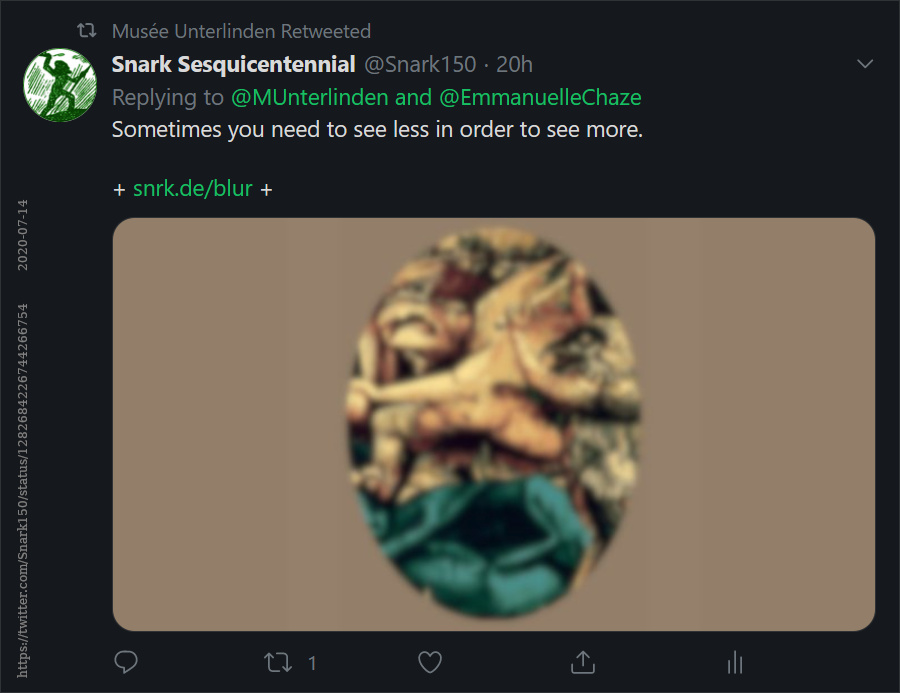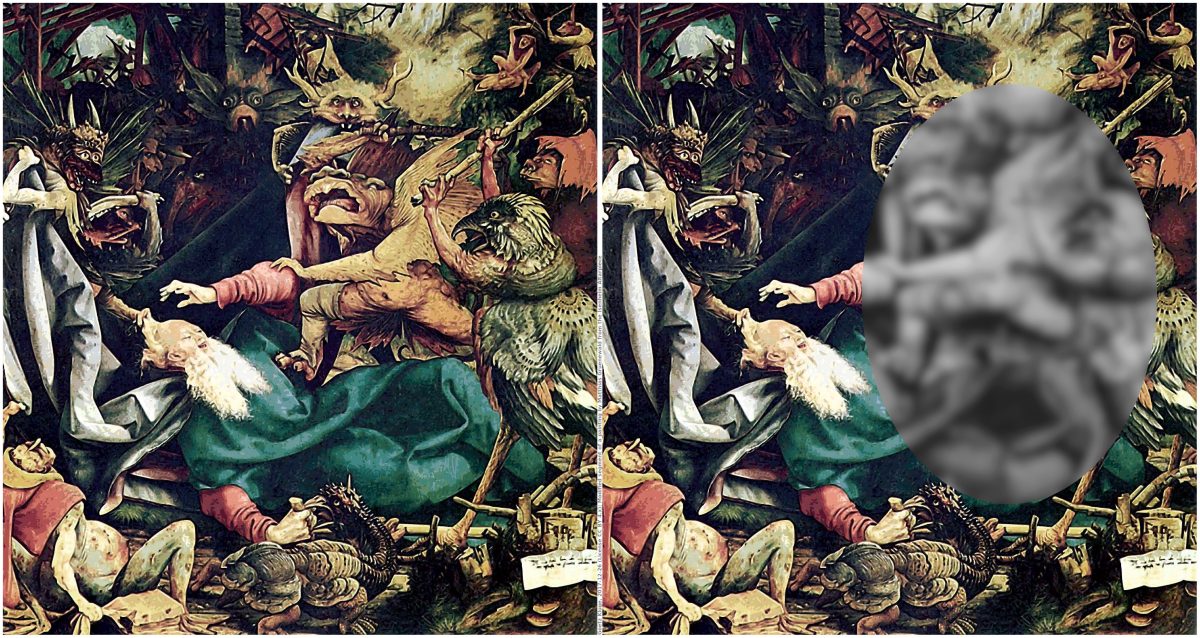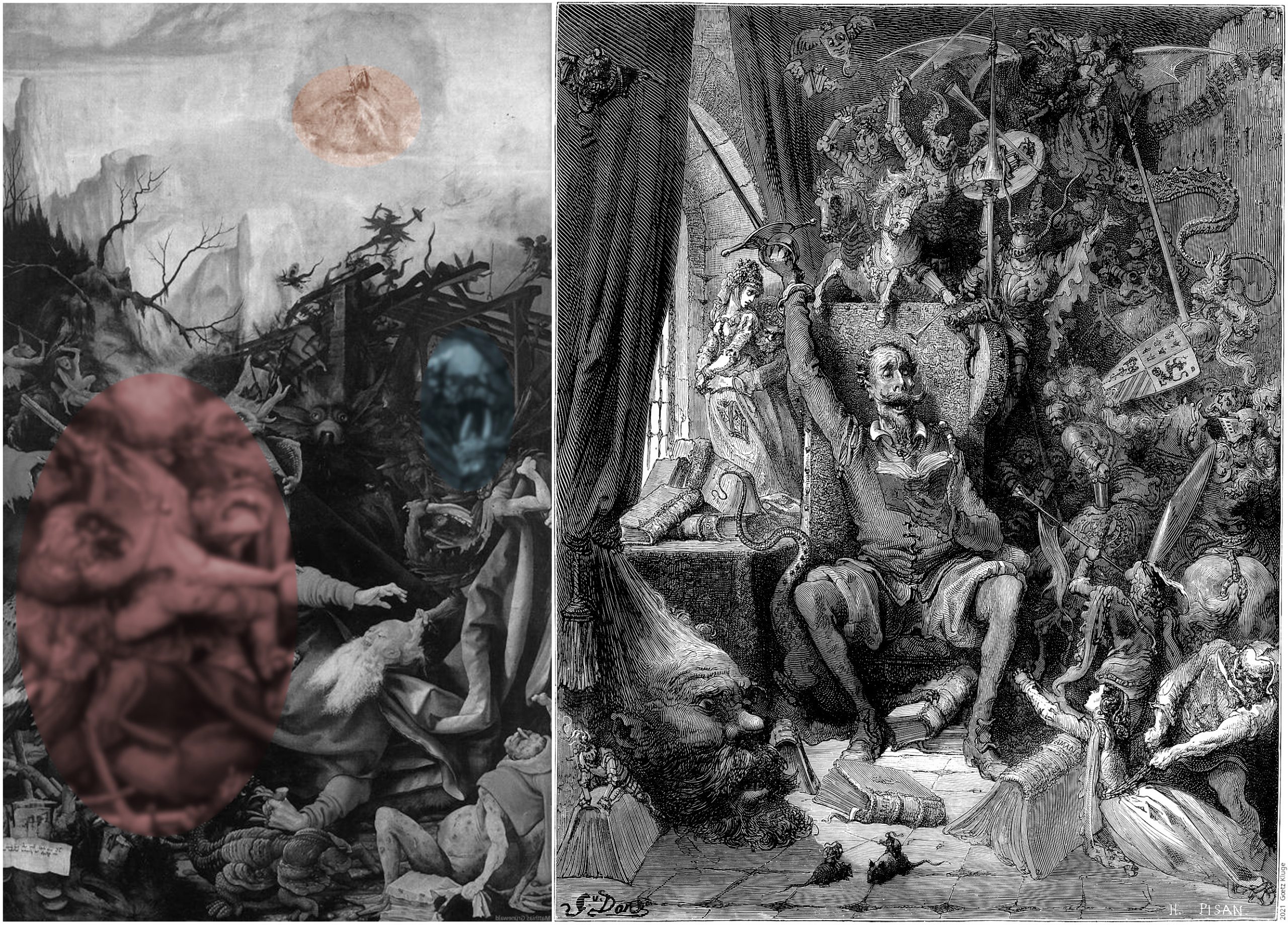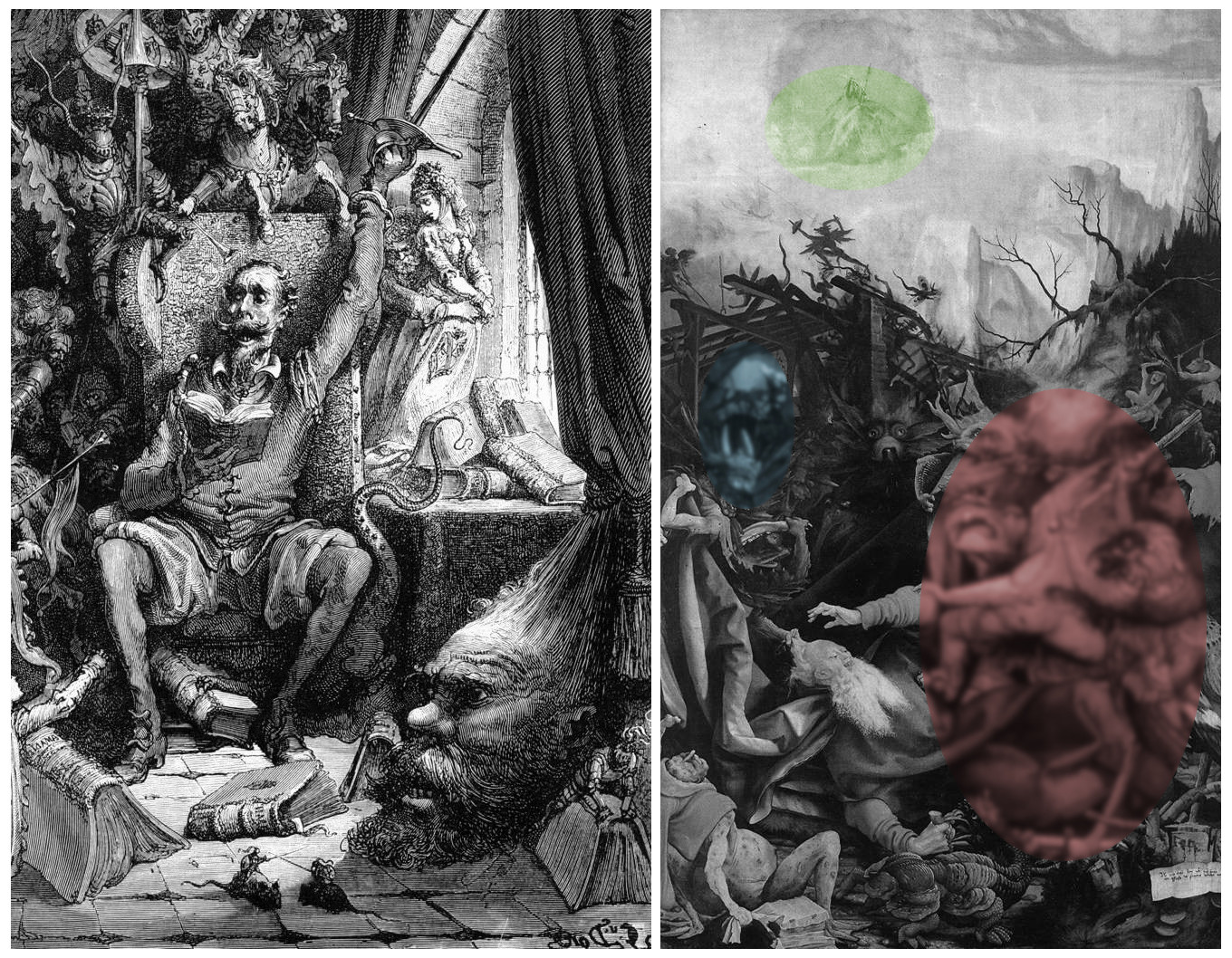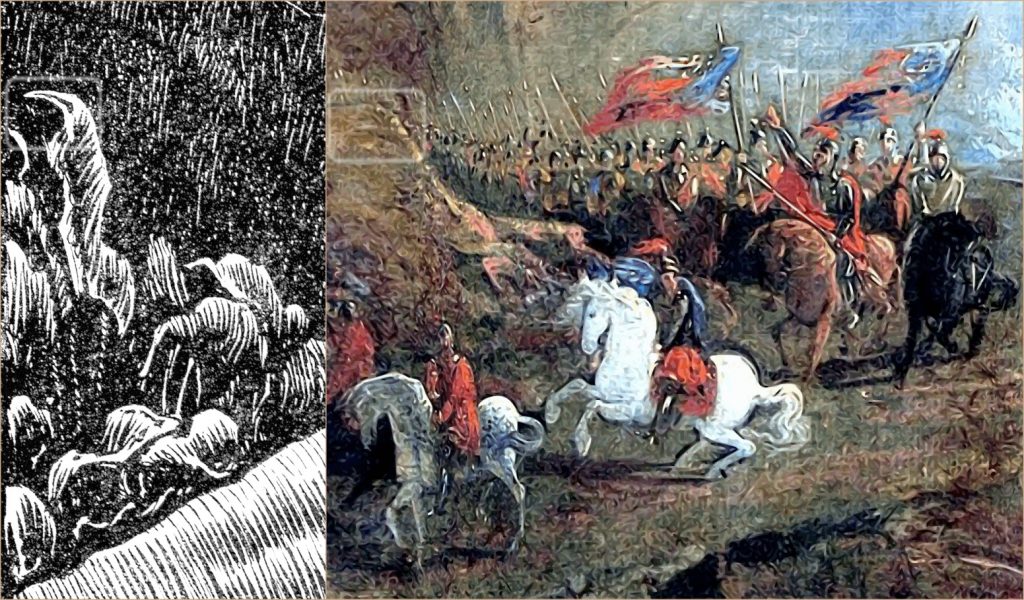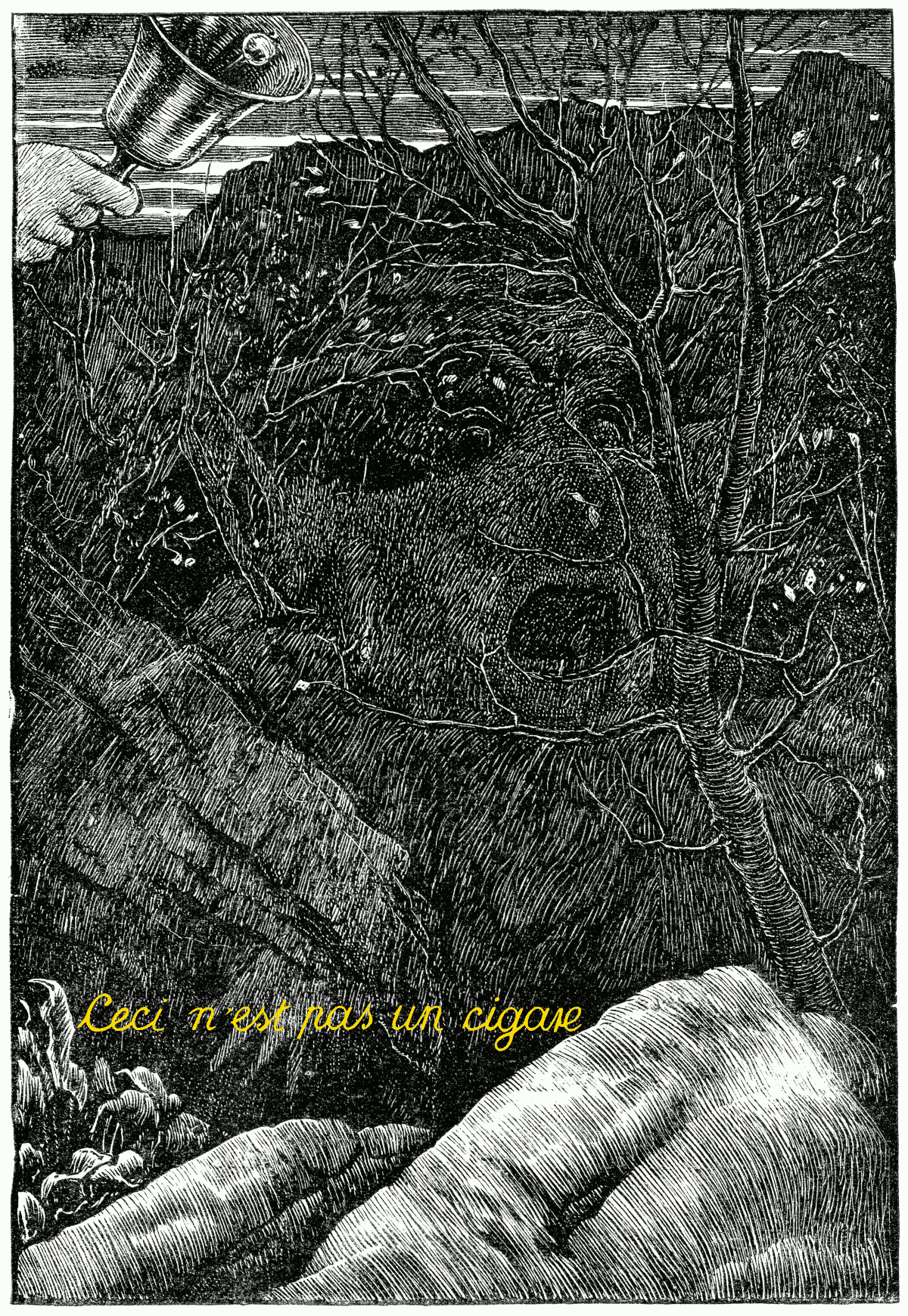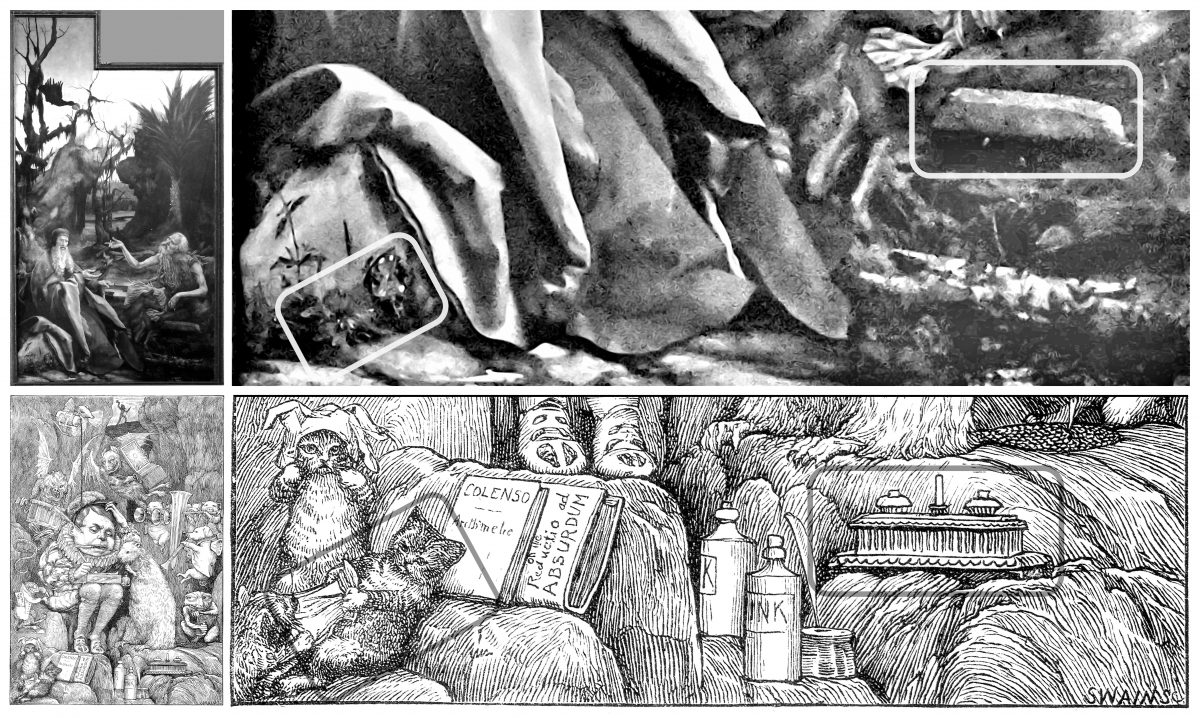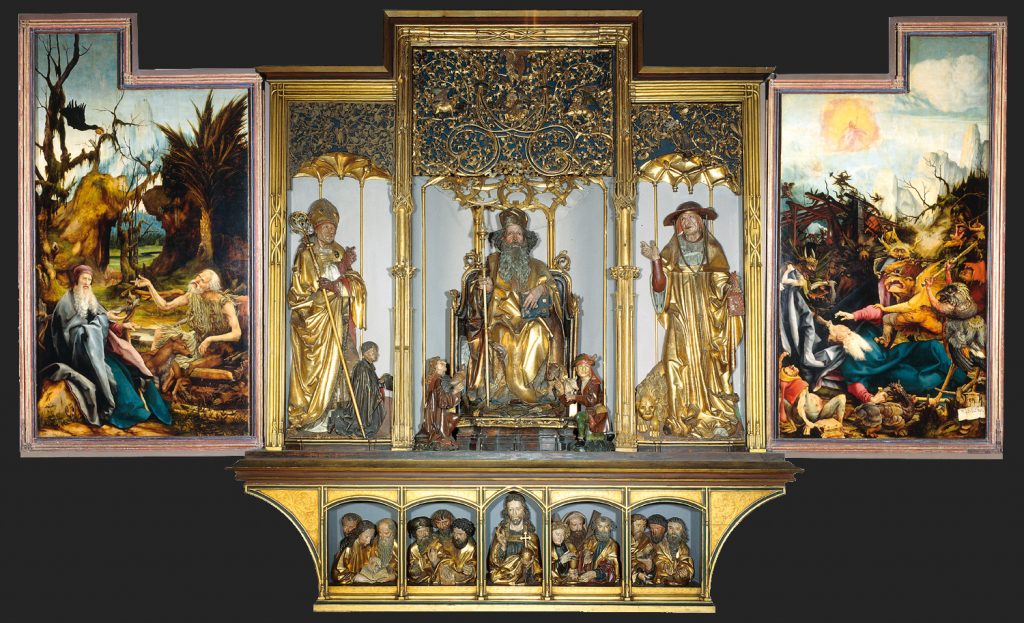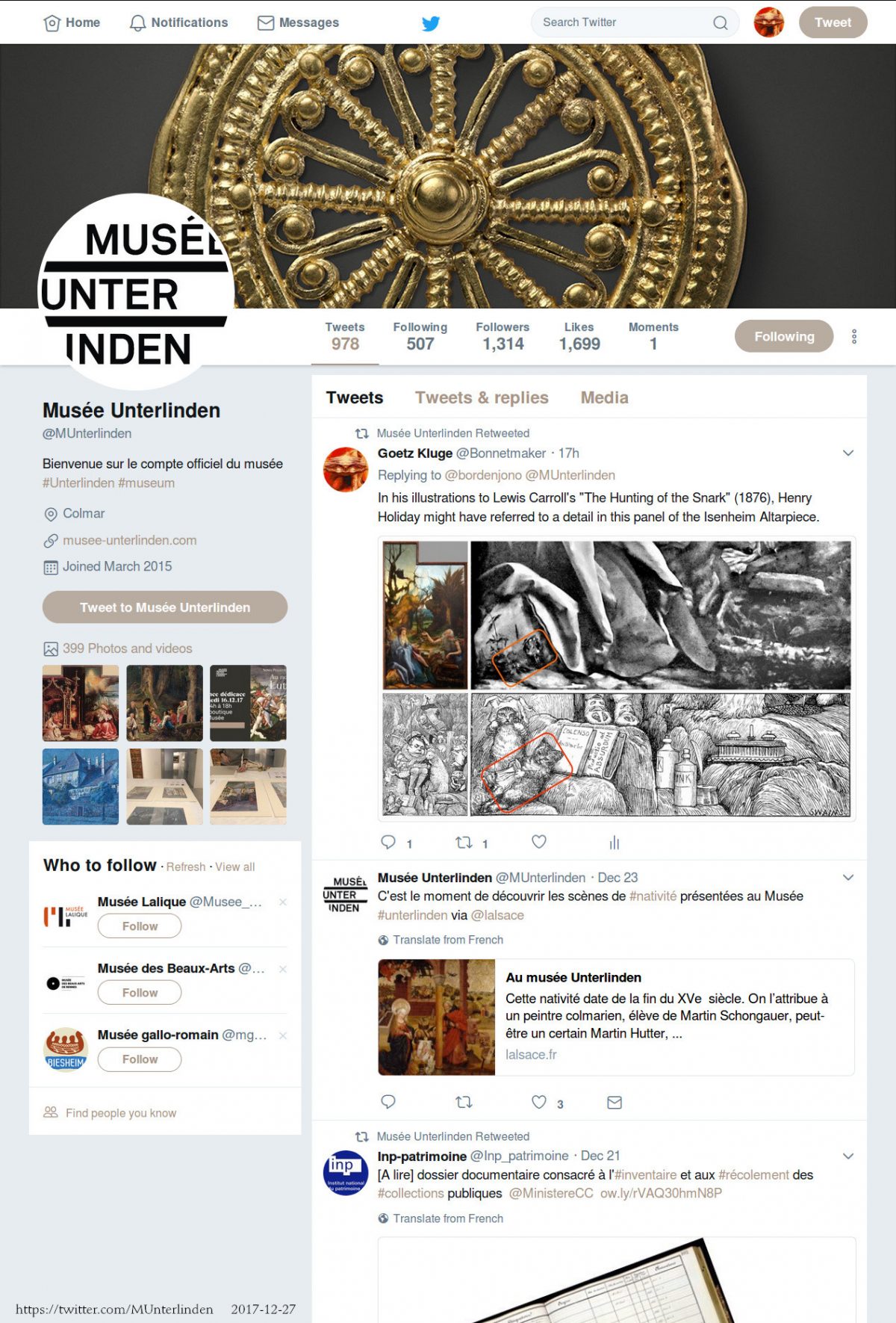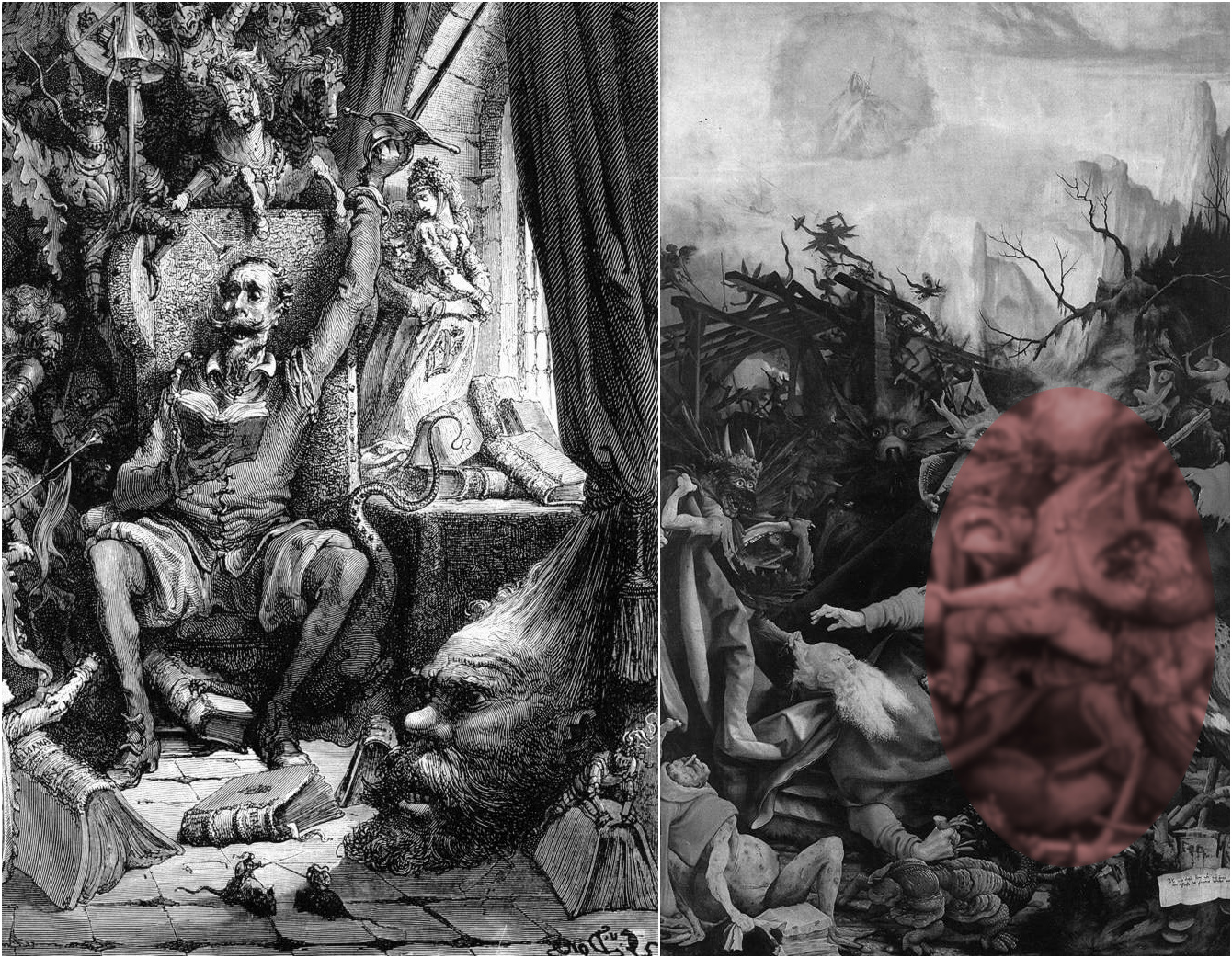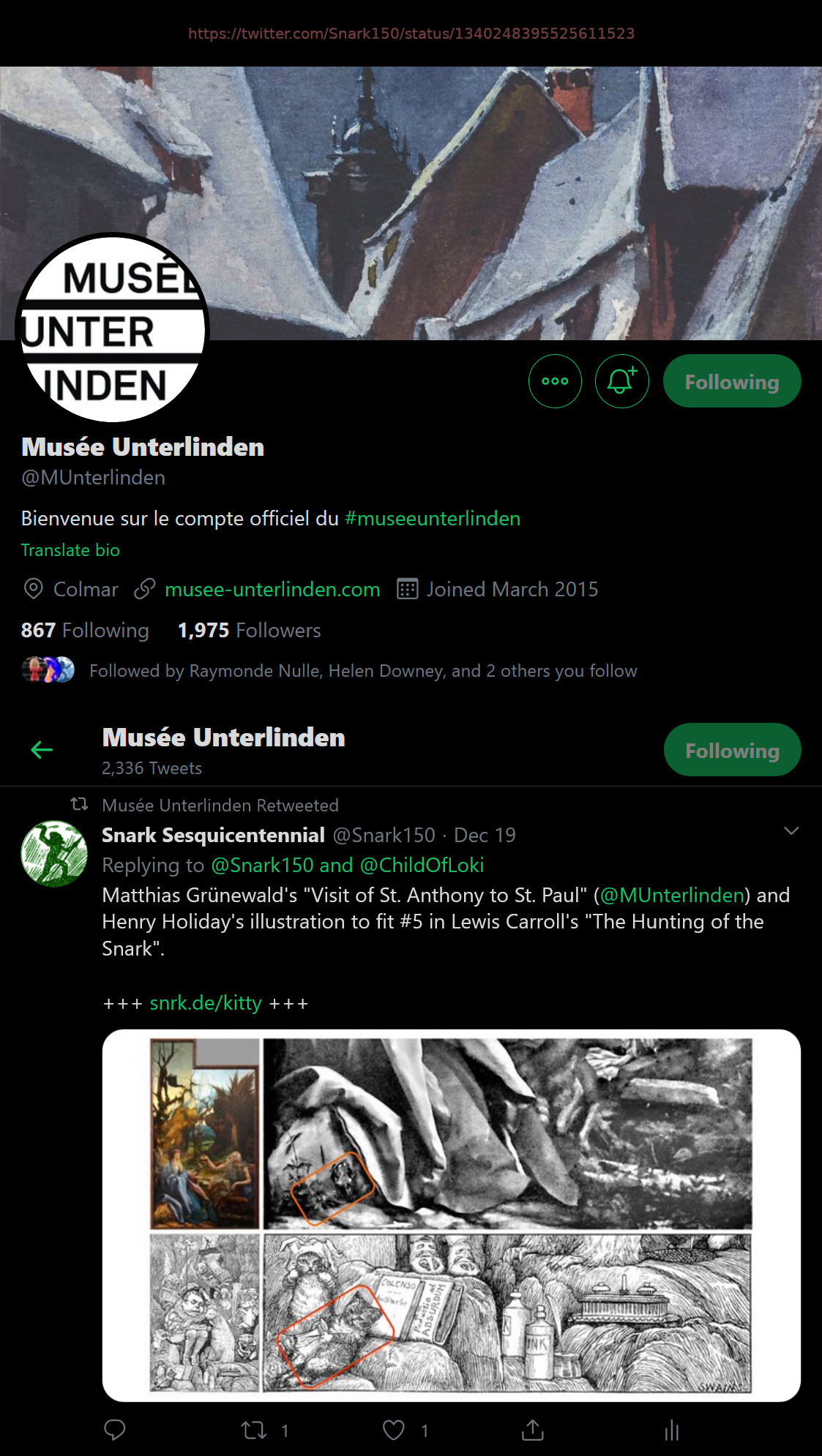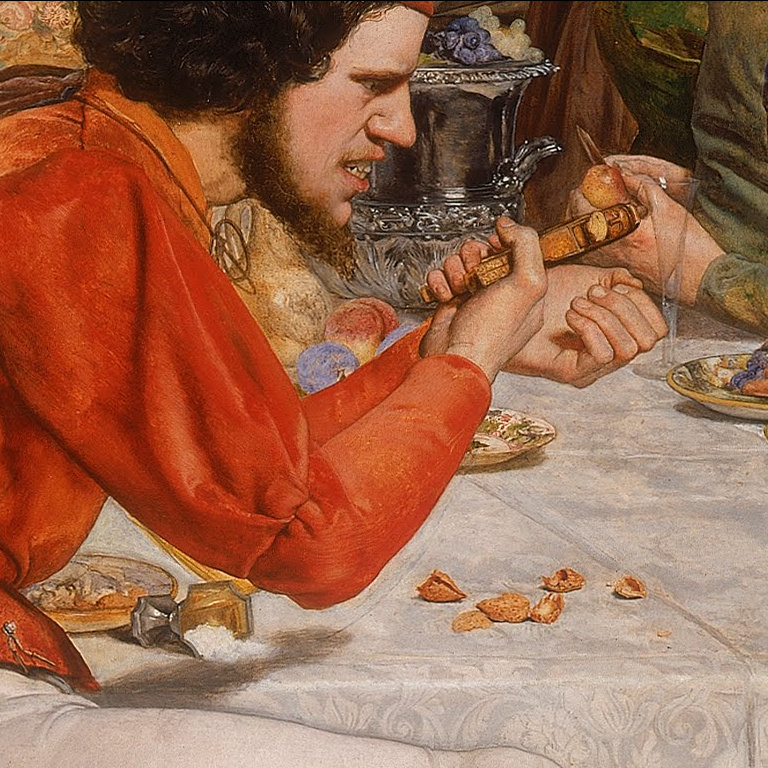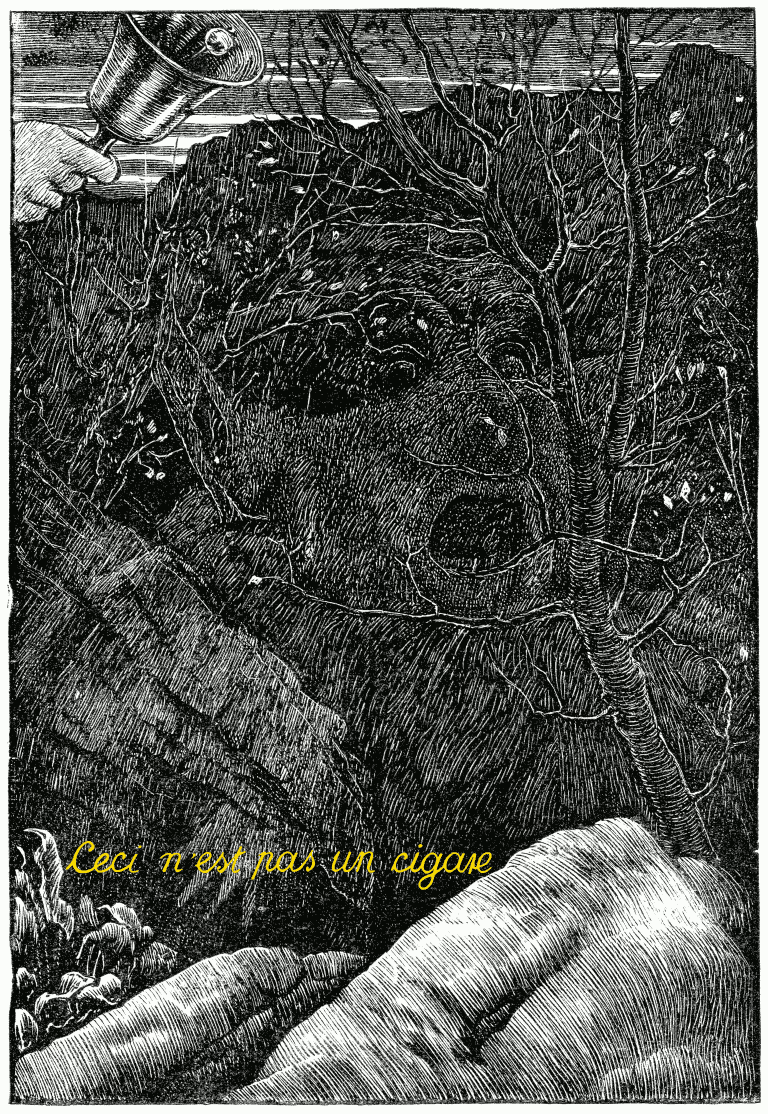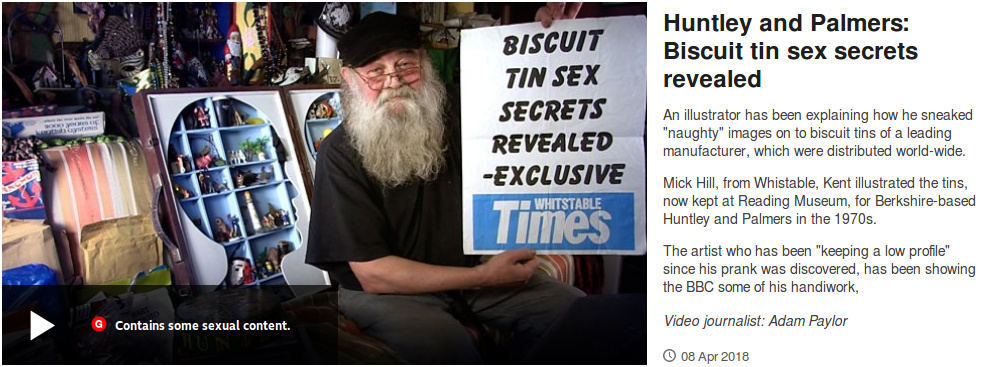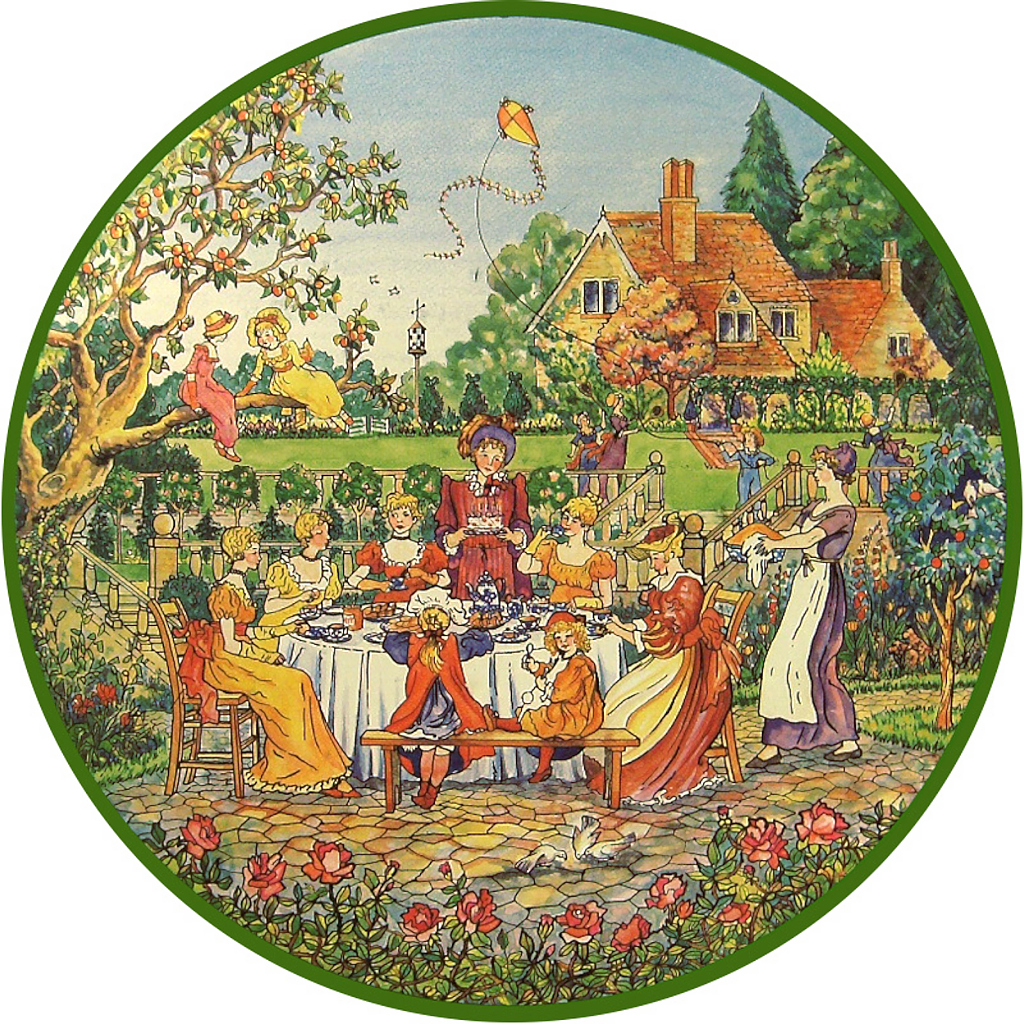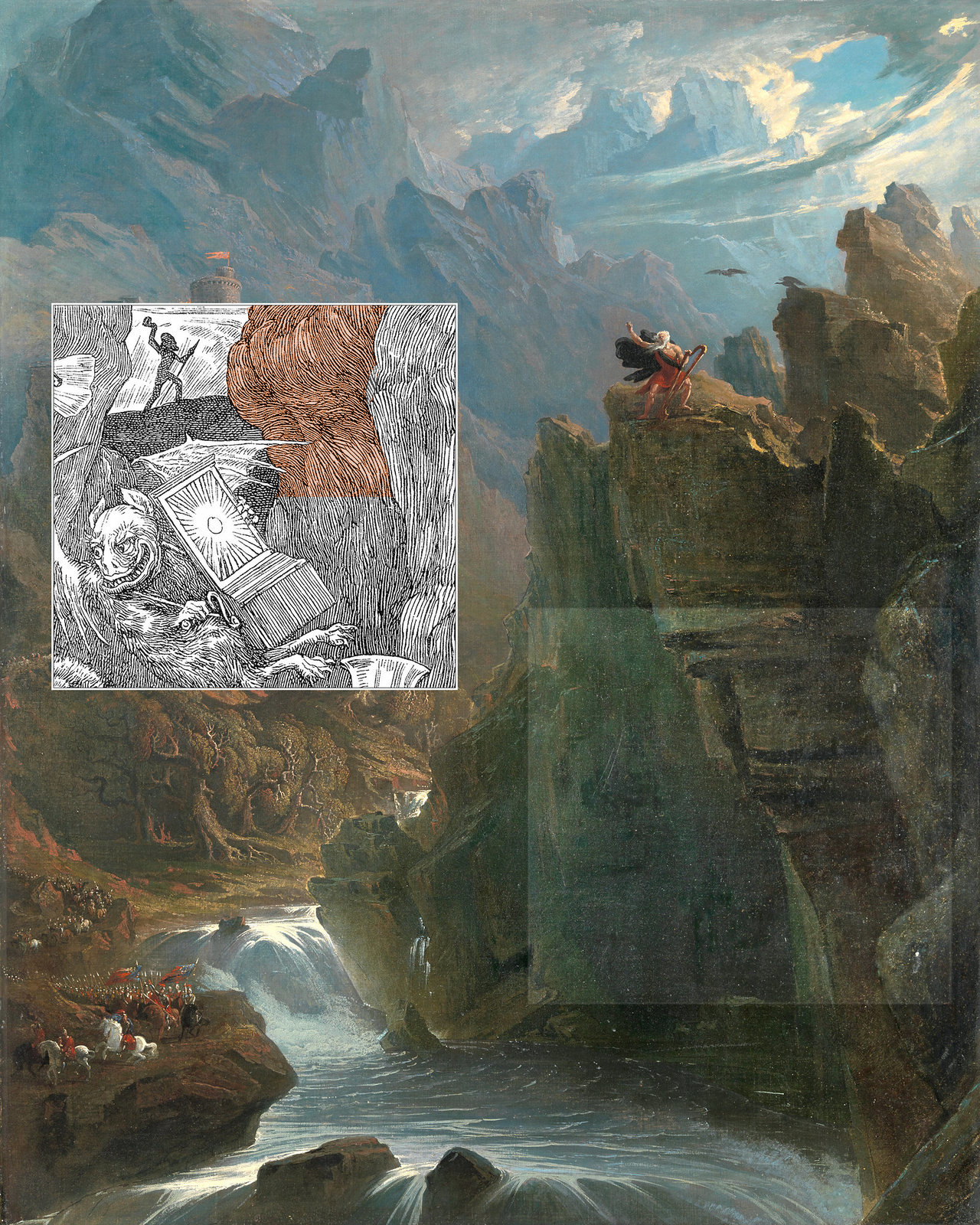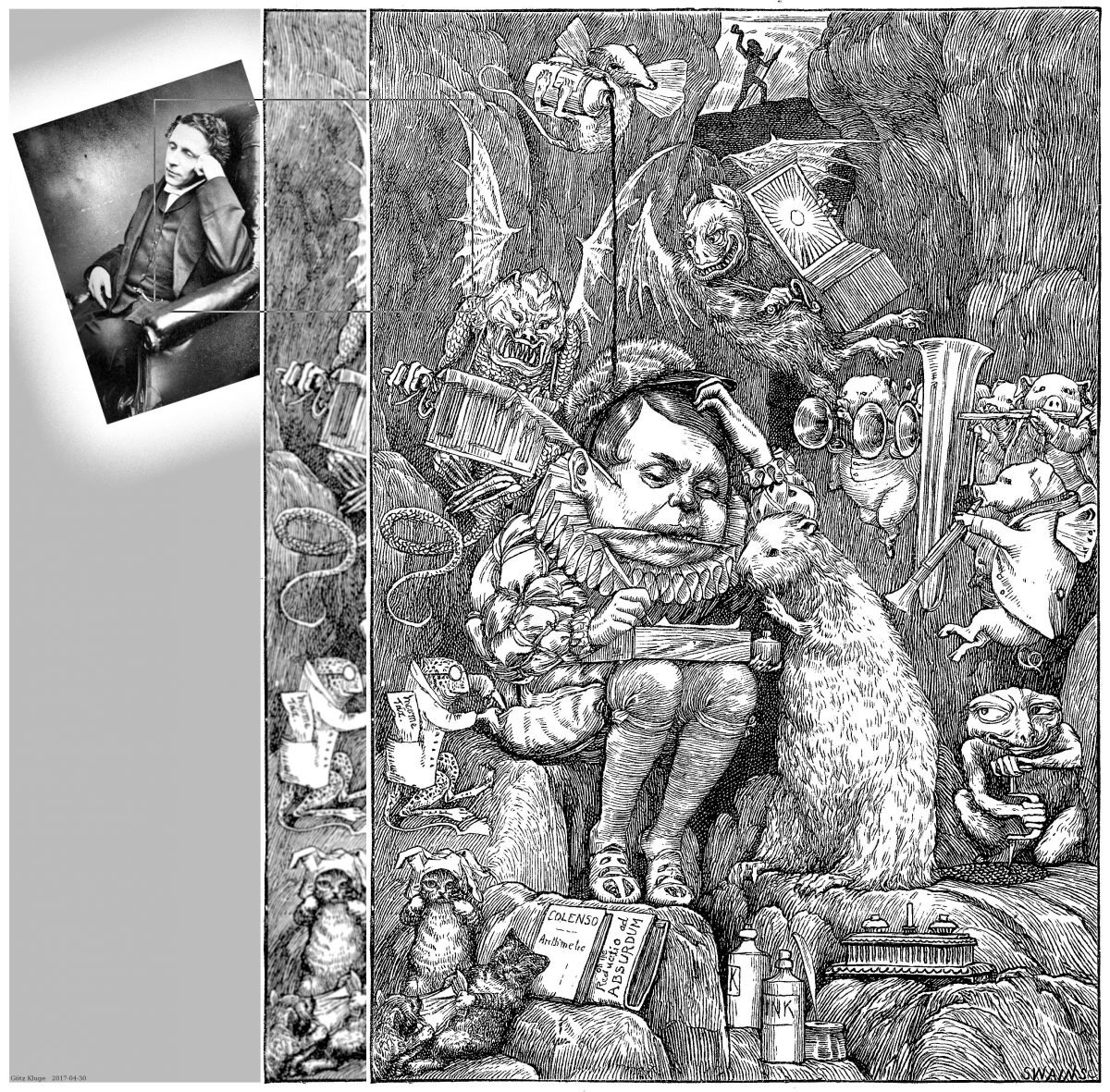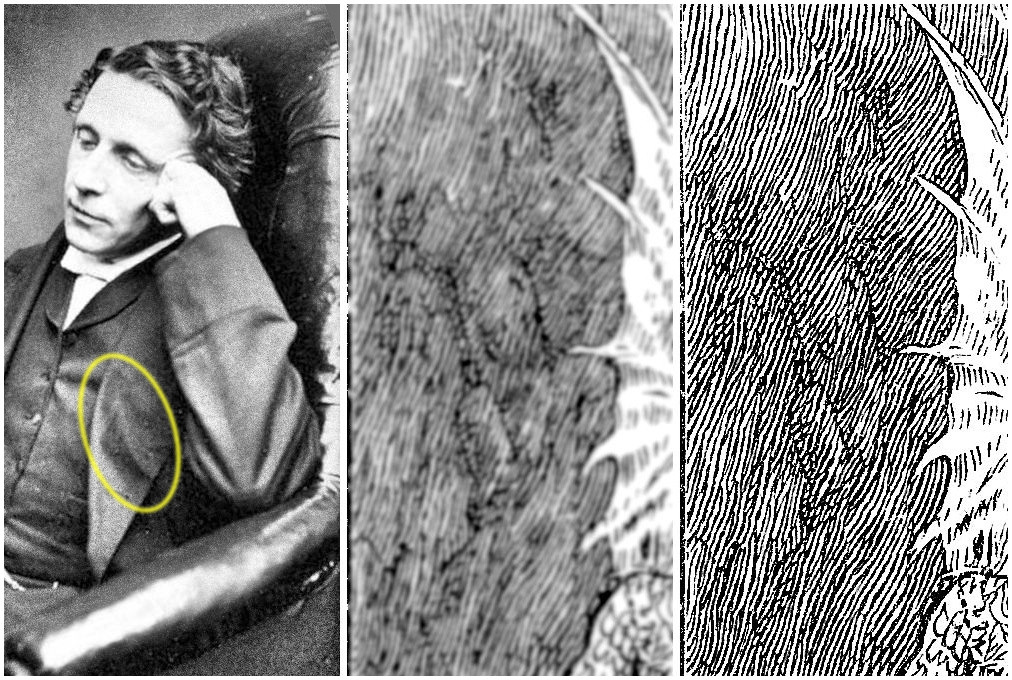Blurring images is low pass filtering images. An artist’s blunted sight can have the same effects like blurring with computerized image processing. Sometimes you need to get rid of distracting details in order to get the whole picture.
Jay Clause‘s what Salvador Dalí taught me about creative work will help you to (perhaps) get the whole picture. However, keep in mind that artists like to play with what the beholders of their work might want (or might not want) to percieve. Even without blurring, artists can deny anything you “see” in an ambiguous creation: They play with their own pareidolia as well as with the pareidolia of their audience.
Before computerized image processing was available, artists use simple techniques to blur images. For example, looking at an image through a feather did the trick.
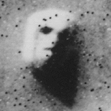 Blurring might help you to see things which you wouldn’t see with clear sight. It’s fine to try that with artwork which might have been intentionally created for such an exercise. But better make sure that it was an artist who created the face that is looking at you. I don’t know whether Mars ever has been inhabited by artists.
Blurring might help you to see things which you wouldn’t see with clear sight. It’s fine to try that with artwork which might have been intentionally created for such an exercise. But better make sure that it was an artist who created the face that is looking at you. I don’t know whether Mars ever has been inhabited by artists.
Rather than suffering from pareidolia, artists get inspired by it.
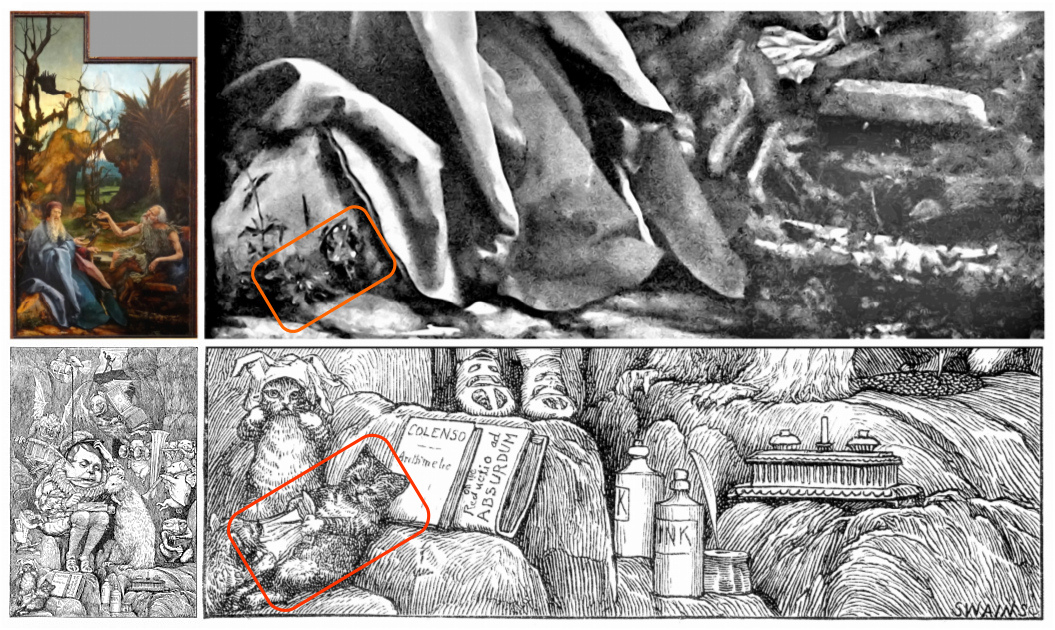
Sometimes blurring helps to reveal structures hidden in the hatching.
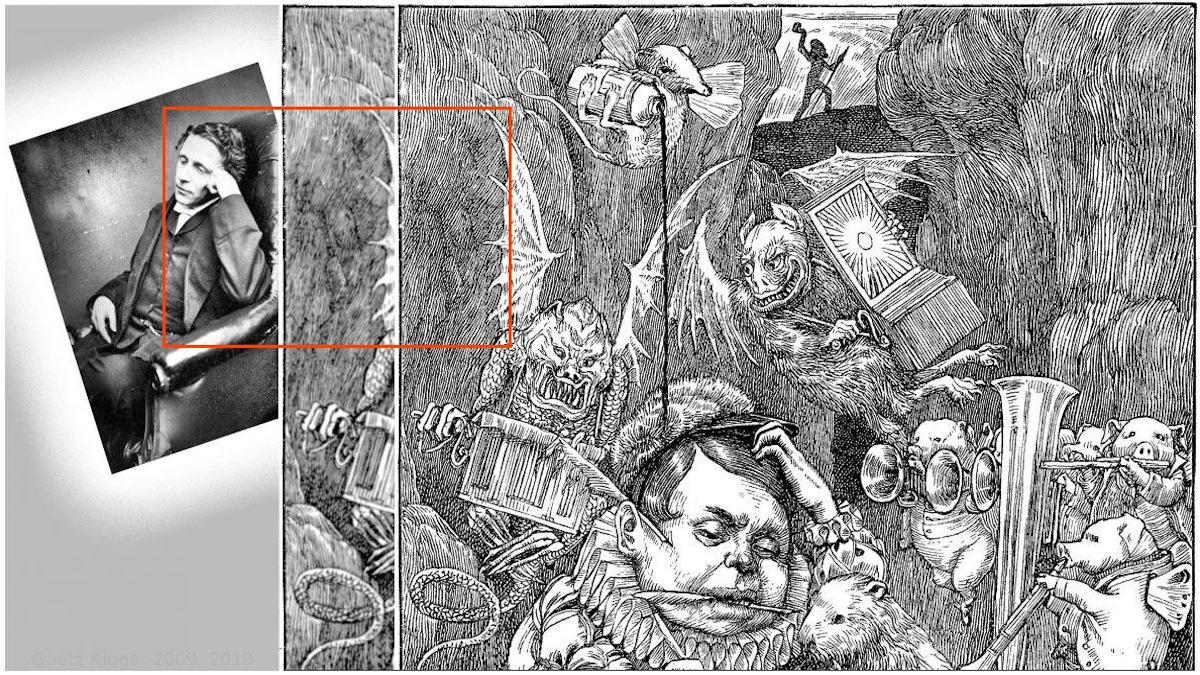
See also: Susana Martinez-Conde, Dave Conley, Hank Hine, Joan Kropf, Peter Tush, Andrea Ayala and Stephen L. Macknik: Marvels of illusion: illusion and perception in the art of Salvador Dali
2017-12-28, updated: 2024-05-05


